Where Did The Stars Go?
Where did the stars go?
One day, you find time to get out of the clutches of your work life and you decide to gaze at the stars.
Something which you used to do when you were a kid.
But the city life with all its glory has diverted you to other ‘fun’ things.

But to your amazement you find that the density of stars has drastically decreased.
‘That’s preposterous’- you say to yourself. That can’t be true.
You are positive that it has something to do with you aging.

You decide to go to your eye doctor and do a thorough check up. The doctor concludes that your eye sight is perfect.

You are delighted, knowing that your eye sight is perfect and that you are going to see those stars again. You spend all day lamenting about it.
You crave for the starry night sky. And you are sure it would look like so :

So, the following night you go to the terrace to rejoice at the sight. But yet see that the sky is not starry at all as you had marveled.
In fact, there is a stark difference between what you had in mind and what you observe.

You get increasingly concerned about it. You ask a few people around and you find out that the answer to this mysterious phenomenon is Light Pollution..
And you start to explore this new bizarre form of pollution.
What is Light Pollution?
Alteration of natural light levels in the outdoor environment owing to artificial light sources.
What does it do?
The impact of light pollution is to reduce our eye’s limiting magnitude. That means that we can see fewer and fewer stars.

The differences in the number of stars that can be seen due to varying levels of background light pollution.
Light pollution competes with starlight in the night sky for urban residents, interferes with astronomical observatories, and, like any other form of pollution, disrupts ecosystems and has adverse health effects.
Light pollution is a side effect of industrial civilization. Its sources include building exterior and interior lighting, advertising, commercial properties, offices, factories, streetlights, and illuminated sporting venues.
How can I prevent it?
(Light Pollution and How to Reduce It)
The solution does not involve curtailing nightlife, hampering the nighttime economy or compromising safety. It just requires directing lights where they’re needed and eliminating waste.
Here what you can do prevent light pollution.
1) Only turn on outdoor lights when needed—or install motion sensors.

2) Point the lights downward and outfit them with “shields” to prevent light from traveling sideways. The goal is to shine them only where illumination is wanted—not in people’s eyes or on other people’s property (a case of “light trespass”).

3) Lower the wattage of your bulbs and put them on dimmers. Bright lights and dark shadows don’t improve safety, but reduce it.

4) Close curtains at night to keep indoor light in. If you live in a multi-story building, use black-out curtains to prevent bird crashes.

And, of course, please use energy-efficient lights to cut global warming emissions even more than you’ll be doing already.
Inspiration :
Here’s what the night sky looks now, with light pollution.

And here’s how it will look like without it.

This post is to educate all the followers of the blog about Light Pollution, and raise awareness about it.
“Stars can’t shine without Darkness”
and hence i urge you to do your part to curbing Light Pollution.
Have a good day :)
PC: NASA, classroomclipart, Umut Siliman, eschooltoday,medscape
More Posts from Curiositytherover and Others

Inhabitat’s Week in Green: Tesla Model S recall, and more!


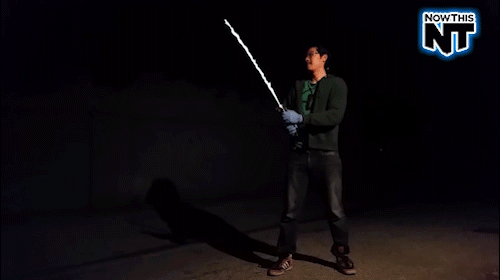
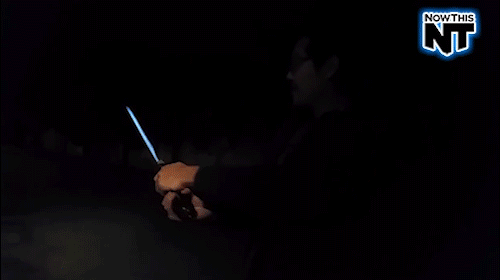

REAL LIFE LIGHTSABER ALERT!
The guy that made the real life version of Mjolnir has crafted another real version of a fictional weapon: a functioning lightsaber. Allen Pan made the fabled Jedi weapon out of an igniter, butane, methanol and acetone which creates a focused pillar of flame. It even makes real sounds! Now, of course this isn’t a conventional lightsaber and you shouldn’t try this at home but it’s awesome that somebody finally accomplished something close! GIVE THIS MAN A GRANT.

We pulled together the week’s top tech stories, just for you:
1. Formula E is planning the first racing series for driverless cars You read that right: Before every Formula E race, two autonomous vehicles will go head-to-headlights, in a race straight out of every Sci-Fi fan’s wildest dreams. via: @engadget
2. How Technology Will Transform Retirement Someday in the near future, being selfish and obsessed with technology might be qualities that senior citizens praise today’s Millennials for. All around the world, young people are hard at work creating technology that will take care of them when they’re older. via: The Wall Street Journal
3. Who’s going to fly those Amazon delivery drones? The short answer is, probably no one. Which is for the best, really. After all, the real reason we don’t have flying cars is because people are bad drivers. And adding a z axis would be like trying to navigate rush-hour traffic in midair. via: ZDNet
4. Wayfindr Is on a Quest to Optimize Cities for the Visually Impaired After a successful experiment at London’s Pimlico Station and a recently received grant of $1 million from Google.org, this company wants to change the way visually impaired commuters navigate the London Underground. via: @wired

Glowing bandages can reduce the chances of antibiotic-resistant bugs

Jeff Bezos beats Elon Musk’s SpaceX in the reusable rocket race
Solar System: 2016 Preview
What do we have planned for 2016? A return to the king of planets. A survey of mysterious Ceres. More postcards from Pluto. Anyone who follows solar system exploration in 2016 is in for quite a ride. Last year was one for the record books – and now here are 10 things to look forward to in the new year. See also: what we have planned agency wide for 2016.
Juno Arrives at Jupiter

July 4, 2016 is arrival day for the Juno mission, the first sent expressly to study the largest planet in the solar system since our Galileo mission in the 1990s. Humans have been studying Jupiter for hundreds of years, yet many basic questions about the gas world remain: How did it form? What is its internal structure? Exactly how does it generate its vast magnetic field? What can it tell us about the formation of other planets inside and outside our solar system? Beginning in July, we’ll be a little closer to the answers.
OSIRIS-REx Takes Flight
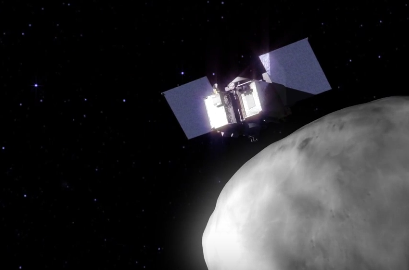
The OSIRIS-REx mission, short for Origins-Spectral Interpretation-Resource Identification-Security-Regolith Explorer, sets sail for an asteroid in September. The spacecraft will use a robotic arm to pluck samples from the asteroid Bennu to help better explain our solar system’s formation and even find clues to how life began.
Dawn Sees Ceres Up Close

After an odyssey of many years and millions of miles, in December the Dawn spacecraft entered its final, lowest mapping orbit around the dwarf planet Ceres. The intriguing world’s odd mountains, craters and salty deposits are ready for their close-ups. We can expect new images of the starkly beautiful surface for months.
Cassini Commences Its Grand Finale

In late 2016, the Cassini spacecraft will begin a daring set of orbits called the Grand Finale, which will be in some ways like a whole new mission. Beginning this year and extending into next, the spacecraft will repeatedly climb high above Saturn’s poles, flying just outside its narrow F ring 20 times. After a last targeted Titan flyby, the spacecraft will then dive between Saturn’s uppermost atmosphere and its innermost ring 22 times. As Cassini plunges past Saturn, the spacecraft will collect rich and valuable information far beyond the mission’s original plan.
New Horizons Sends More Postcards from Pluto

We have stared slack-jawed at the images and discoveries from last year’s Pluto flyby, but the fact is that most of the data that New Horizons collected remains on board the spacecraft. In 2016, we’ll see a steady release of new pictures — and very likely some expanded answers to longstanding questions.
Mars Missions March Forward
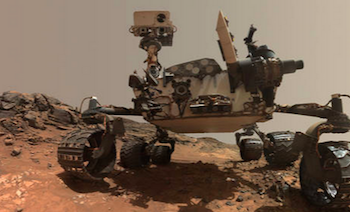
With five of our missions continuing their Martian quests, 2016 should be a good year for discoveries on the Red Planet.
Mars Odyssey
Mars Opportunity
Mars Reconnaissance Orbiter
Mars Curiosity
MAVEN
Mercury Transits the Sun

A transit is a very rare astronomical event in which a planet passes across the face of the sun. In May, Mercury will transit the sun, on of only thirteen Mercury transits each century on average.
LRO Keeps an Eagle Eye On the Moon

The Lunar Reconnaissance Orbiter (LRO) will extend its run in 2016, scanning the moon’s surface with its sharp-eyed instruments, investigating everything from lava tube skylights to changes at the Apollo landing sites.
Spacecraft Fly Under Many Flags

Our partner agencies around the world will be flying several new or continuing planetary missions to destinations across the solar system:
Akatsuki at Venus
ExoMars
Mars Express
Mars Orbiter Mission
Rosetta at Comet 67/P
Technology Demonstration Missions Push the Envelope
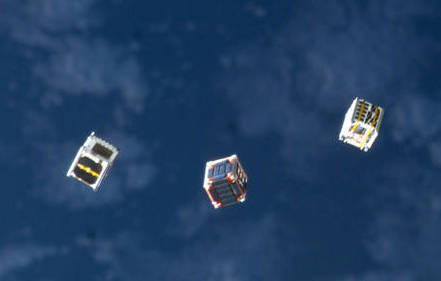
We’re always looking for new frontiers on distant worlds, as well as the technology that will take us there. This year, several missions are planned to take new ideas for a spin in space:
Deep Space Atomic Clock
NODES
LDSD
Make sure to follow us on Tumblr for your regular dose of space: http://nasa.tumblr.com


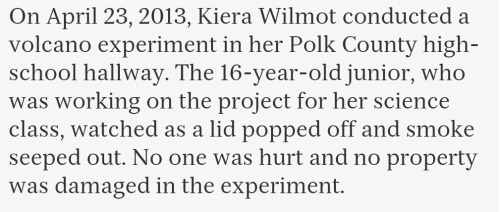


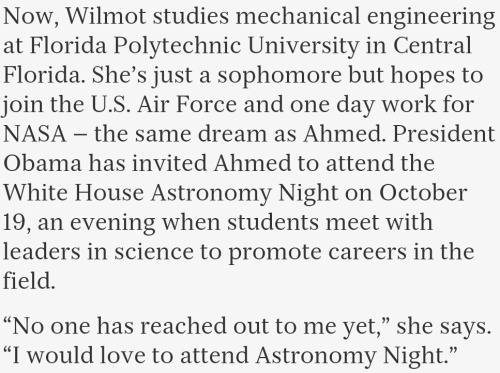
This is so sad. Women are already discouraged from pursuing science. Treating us like criminals for experimenting isn’t helping.
Splish, Splash, Orion Takes a Bath
The Orion spacecraft is a capsule built to take humans farther than they’ve ever gone before, to deep space and eventually Mars. But before astronauts travel inside this new vehicle, we have to perform tests to ensure their safety.

One of these tests that we’ll talk about today simulates an ocean splashdown. Water impact testing helps us evaluate how Orion may behave when landing under its parachutes in different wind conditions and wave heights. The spacecraft has been undergoing a series of these tests at our Langley Research Center’s Hydro Impact Basin…which is our fancy way of saying pool.

The test capsule, coupled with the heat shield from Orion’s first spaceflight, swung like a pendulum into Langley’s 20-foot-deep basin on Aug. 25.

Inside the capsule were two test dummies – one representing a 105-pound woman and the other, a 220-pound man — each wearing spacesuits equipped with sensors. These sensors will provide critical data that will help us understand the forces crew members could experience when they splash down in the ocean.
This specific drop was the ninth in a series of 10 tests taking place at Langley’s Landing and Impact Research Facility. It was designed to simulate one of the Orion spacecraft’s most stressful landing scenarios, a case where one of the capsule’s three main parachutes fails to deploy. That would cause Orion to approach its planned water landing faster than normal and at an undesirable angle.
Under ideal conditions, the Orion capsule would slice into the water of the Pacific Ocean traveling about 17 miles per hour. This test had it hitting the pool at about 20 mph, and in a lateral orientation. Instead of being pushed down into their seats, astronauts in this scenario would splashdown to the side.
With this test’s success and one final drop in this series scheduled for mid-September, researchers have accumulated a lot of important information.
To find out more, visit nasa.gov or follow @nasaorion on Tumblr, Twitter and Facebook.
Make sure to follow us on Tumblr for your regular dose of space: http://nasa.tumblr.com
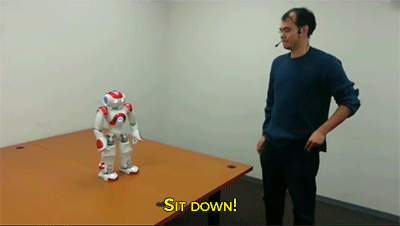
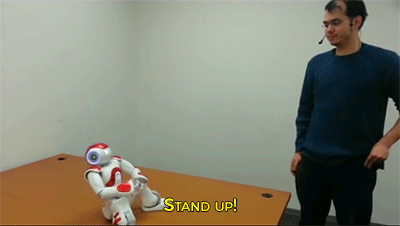
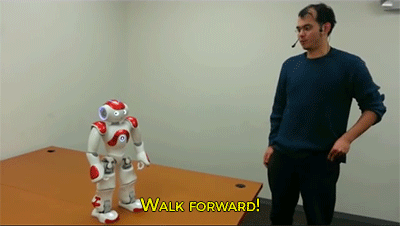
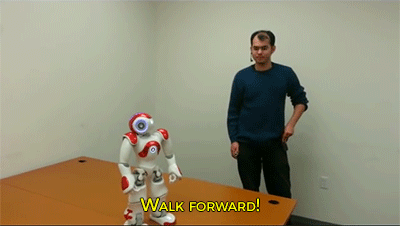
Scientists Are Teaching This Robot To Say “No” Humans - watch the full video



A major breakthrough could let both same-sex partners be biological parents to their kids
Could two same-sex partners ever be biologically related to one baby? Maybe. With a relatively new process called in vitro gametogenesis, or IVG, scientists could combine genetic material from both parents. While we may have to wait a bit for it — here’s how it works.
-
 loudlawyerslimeempath-blog liked this · 5 years ago
loudlawyerslimeempath-blog liked this · 5 years ago -
 awayinouterspaces reblogged this · 5 years ago
awayinouterspaces reblogged this · 5 years ago -
 selkramazed reblogged this · 6 years ago
selkramazed reblogged this · 6 years ago -
 captaintoughfluff liked this · 6 years ago
captaintoughfluff liked this · 6 years ago -
 capi-agglo-blog reblogged this · 7 years ago
capi-agglo-blog reblogged this · 7 years ago -
 capi-agglo-blog liked this · 7 years ago
capi-agglo-blog liked this · 7 years ago -
 aerstic-spire reblogged this · 8 years ago
aerstic-spire reblogged this · 8 years ago -
 segaru liked this · 8 years ago
segaru liked this · 8 years ago -
 thegreatdot reblogged this · 8 years ago
thegreatdot reblogged this · 8 years ago -
 thegreatdot liked this · 8 years ago
thegreatdot liked this · 8 years ago -
 inspired-m reblogged this · 8 years ago
inspired-m reblogged this · 8 years ago -
 redstxne reblogged this · 8 years ago
redstxne reblogged this · 8 years ago -
 everywheremuggles reblogged this · 8 years ago
everywheremuggles reblogged this · 8 years ago -
 haucay liked this · 8 years ago
haucay liked this · 8 years ago -
 oninohime reblogged this · 8 years ago
oninohime reblogged this · 8 years ago -
 astronovia reblogged this · 8 years ago
astronovia reblogged this · 8 years ago -
 cosmicmazapan reblogged this · 9 years ago
cosmicmazapan reblogged this · 9 years ago -
 saloume liked this · 9 years ago
saloume liked this · 9 years ago -
 toasted-pumpkin-marshmallows reblogged this · 9 years ago
toasted-pumpkin-marshmallows reblogged this · 9 years ago -
 toasted-pumpkin-marshmallows liked this · 9 years ago
toasted-pumpkin-marshmallows liked this · 9 years ago -
 i-can-hear-the-empty-sounds reblogged this · 9 years ago
i-can-hear-the-empty-sounds reblogged this · 9 years ago -
 avengemeeee liked this · 9 years ago
avengemeeee liked this · 9 years ago -
 telthor liked this · 9 years ago
telthor liked this · 9 years ago -
 fmarshal15 liked this · 9 years ago
fmarshal15 liked this · 9 years ago -
 phoxy-fox reblogged this · 9 years ago
phoxy-fox reblogged this · 9 years ago -
 aergiamoon liked this · 9 years ago
aergiamoon liked this · 9 years ago -
 superbeagledinosaur reblogged this · 9 years ago
superbeagledinosaur reblogged this · 9 years ago -
 keckonoko reblogged this · 9 years ago
keckonoko reblogged this · 9 years ago -
 keckonoko liked this · 9 years ago
keckonoko liked this · 9 years ago -
 tardistype221b reblogged this · 9 years ago
tardistype221b reblogged this · 9 years ago -
 gone-achievementhunting liked this · 9 years ago
gone-achievementhunting liked this · 9 years ago -
 maudlinmango liked this · 9 years ago
maudlinmango liked this · 9 years ago -
 jaroftaromilk liked this · 9 years ago
jaroftaromilk liked this · 9 years ago -
 micamone reblogged this · 9 years ago
micamone reblogged this · 9 years ago -
 achievement-tooths-archive reblogged this · 9 years ago
achievement-tooths-archive reblogged this · 9 years ago -
 achievement-tooths-archive liked this · 9 years ago
achievement-tooths-archive liked this · 9 years ago -
 castironbakery reblogged this · 9 years ago
castironbakery reblogged this · 9 years ago -
 generalgrievousposting reblogged this · 9 years ago
generalgrievousposting reblogged this · 9 years ago -
 katscratchlite liked this · 9 years ago
katscratchlite liked this · 9 years ago -
 aphrilis liked this · 9 years ago
aphrilis liked this · 9 years ago -
 nixxonwtfu reblogged this · 9 years ago
nixxonwtfu reblogged this · 9 years ago -
 nixxonwtfu liked this · 9 years ago
nixxonwtfu liked this · 9 years ago